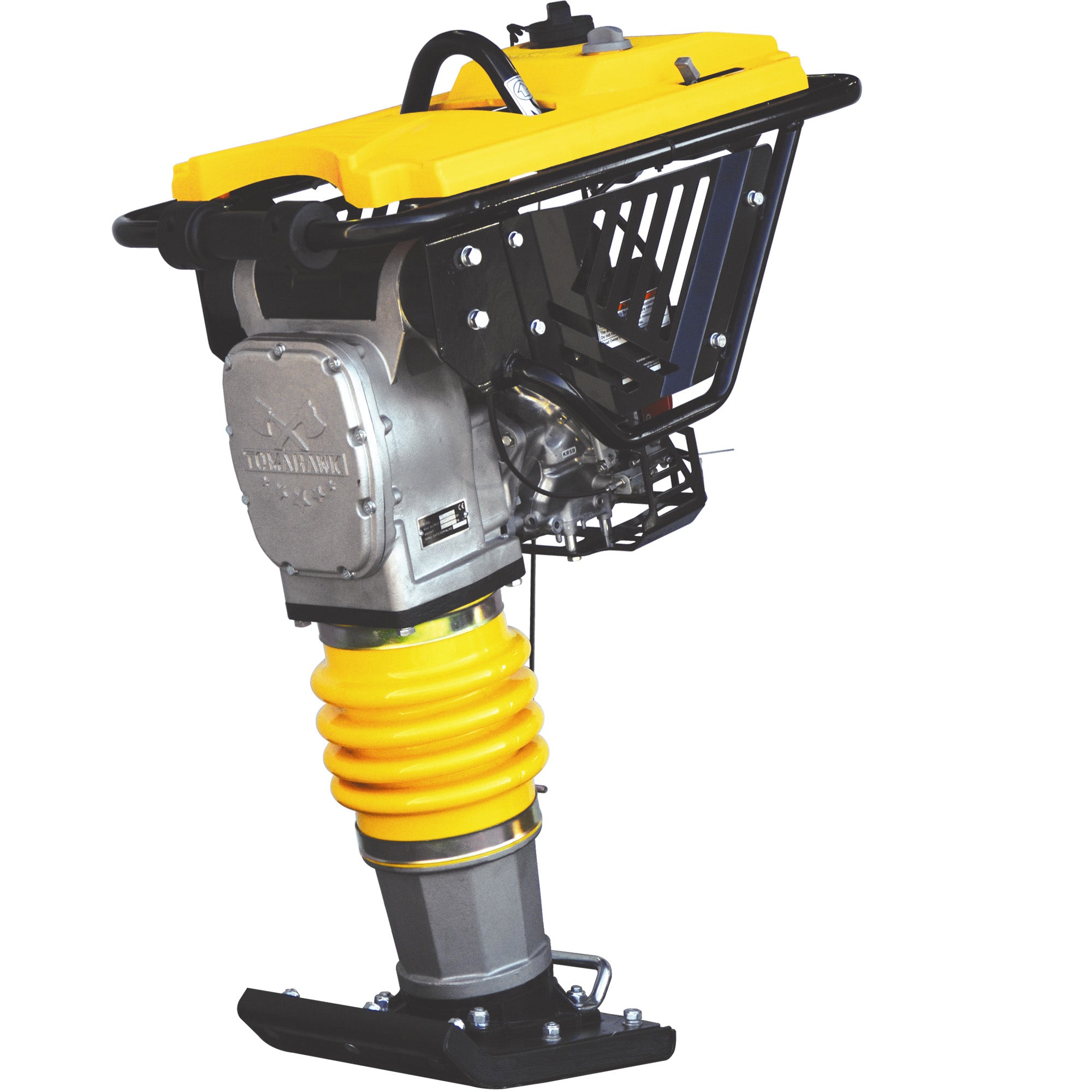Tomahawk Trash Water Pumps are designed for heavy-duty water transfer tasks and can even pass solid debris up to half the inlet size. This guide will help you assemble and get your Tomahawk Trash Water Pump running smoothly.
Gather Your Supplies
You will need:
- Inlet and outlet hoses
- Unleaded gasoline
- SAE10W30 4-stroke motor oil
Step-by-Step Assembly
Step 1: Unbox and Setup
Carefully open the box and remove all parts and components. Place the pump on a flat, stable surface.
Step 2: Fill the Oil Reservoir
Fill the oil reservoir with exactly 1.1 liters, or 37 fluid ounces, of SAE10W-30 4-stroke motor oil. Do not overfill, as this could flood the engine.
Step 3: Add Fuel
Fill the engine’s fuel tank with unleaded gasoline with a pump octane rating of 86 or higher. The fuel capacity on this pump’s engine is 5.3 liters, or 1.4 gallons.
Step 4: Connect Hoses
Connect the suction hose to the pump's inlet by attaching the hose coupling. Ensure the strainer is fitted to the end of the suction hose to prevent debris from entering the pump. Next, connect the discharge hose to the pump’s outlet using the hose coupling.
How to Prime the Water Pump
To prime the pump, remove the priming cap on top of the pump housing and pour water into the priming port until the pump’s volute is full. This is essential for proper operation and to prevent damage to the pump.
Starting the Engine
- Turn the fuel valve to the "on" position.
- Move the choke lever to the closed position if the engine is cold. If the engine has been running recently and is still warm, leave the choke lever in the open position.
- Ensure the ignition switch is in the "on" position.
- Pull the recoil starter grip until you feel resistance, then pull briskly.
- If the choke was closed, gradually open it as the engine warms up.
Begin Pumping
To begin pumping, gradually open the throttle to increase engine speed. Monitor the discharge hose to ensure water is flowing steadily. Once water is flowing, adjust the throttle to control output. "Fast" increases flow; "Slow" decreases it.
Optimizing Performance
For optimal performance, place the pump close to water level and use the shortest, widest hoses to reduce fluid friction and priming time. Note that the Tomahawk TW3H pumps up to 290 gallons per minute, but capacity decreases with height, halving at 60 feet and becoming ineffective near 100 feet, with greater discharge head capacity than suction head capacity.
After Use Care
After each use:
- Set the throttle to “slow”
- Turn the ignition switch to “Off”
- Close the fuel valve
- Disconnect the hoses and drain any remaining water from the pump to prevent damage from freezing or corrosion
Clean the pump and store it in a dry place to ensure its longevity.
Your Tomahawk Trash Water Pump is now ready for use. Follow these steps carefully to ensure proper assembly and start-up.
Glossary
Trash Water Pump:
A pump designed to handle large volumes of water containing solids and debris. It is commonly used in construction, agriculture, and emergency flood response to remove dirty water.
Multi-Purpose Pump:
A versatile pump used for various applications, such as water transfer, irrigation, and dewatering, capable of handling different types of fluids and solids.
Water Transfer:
The process of moving water from one location to another, typically using a pump. It is used in various applications, including irrigation, construction, and emergency situations.
Honda GX270:
A model of a medium-sized, 4-stroke gas engine made by Honda, known for its high performance and durability. It is widely used in various types of equipment, including water pumps, generators, and construction machinery.
Volute:
The spiral-shaped casing of a pump designed to direct the flow of fluid from the impeller to the discharge point. It helps convert the velocity of the fluid into pressure.
Impeller:
A rotating component of a pump that transfers energy from the motor to the fluid, increasing its velocity and pressure. It is essential for the pump's operation.
Strainer:
A device placed at the inlet of a pump to prevent debris and large particles from entering and potentially damaging the pump.
Discharge Head Capacity:
The maximum height to which a pump can raise water from the pump's discharge outlet. It represents the pump's ability to overcome resistance in the discharge line.
Inlet Hose:
A hose connected to the intake side of a pump, used to draw water or other fluids into the pump from a source.
Outlet Hose:
A hose connected to the discharge side of a pump, used to direct the flow of water or other fluids out of the pump to a desired location.
Suction Head Capacity:
The maximum height from which a pump can draw water into the pump from the source. It indicates the pump's ability to lift water from below its level.
Nominal Elevation:
The standard or specified height at which a pump can operate efficiently, often used to describe the pump's performance capabilities.
Nominal Flow:
The standard or specified rate of fluid flow that a pump can deliver under normal operating conditions, usually measured in gallons per minute (GPM) or liters per minute (LPM).
Suction:
The process of drawing fluid into a pump through the inlet hose, creating a vacuum that allows the pump to move the fluid.
Keywords
how do I prime a water pump, priming a water pump, Tomahawk Trash Water Pump, water pump assembly, water pump start-up, pump maintenance, heavy-duty water transfer, pump setup guide










